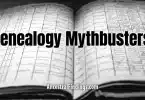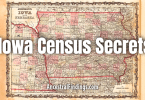While most genealogists rely on the federal census as a foundational tool, those researching ancestors in New York State have a distinct advantage. In addition to appearing in the federal census every ten years, New Yorkers were also counted in a robust series of state censuses. These records, taken at regular intervals between federal censuses, offer an extraordinary opportunity to fill in gaps, confirm relationships, and capture details that the federal government often overlooked.
New York conducted state censuses in the following years: 1825, 1835, 1845, 1855, 1865, 1875, 1892, 1905, 1915, and 1925. These were authorized under various state constitutional provisions, including a requirement for mid-decade population counts to support legislative apportionment and school funding decisions. While earlier censuses are more limited in scope and survival, those from 1855 onward are generally accessible and remarkably detailed.
Why New York Took Its Own Censuses
These state enumerations were not created with genealogists in mind. Their original purpose was administrative: to track population changes for political representation, school district planning, taxation, military preparedness, and social welfare services. The detailed questions arose not from curiosity but from the practical needs of local government. Fortunately for us, those practical needs resulted in the preservation of highly useful data.
For example, the 1855 and 1865 censuses recorded the number of years a family had lived in their current dwelling, distinguishing between native-born New Yorkers and those who immigrated from other states or countries. The 1865 census, taken shortly after the Civil War, uniquely includes questions about military service, helping to identify veterans who may not appear in pension files or military rosters.
What to Expect in Each Census Year
Each enumeration year had a slightly different format. Below is a summary of key details collected:
- 1825–1845: Mostly statistical abstracts; limited name lists, often only heads of households. Some records survive only in aggregate.
- 1855: Names of all household members, relationships, ages (with months for infants), birthplace, years in residence, native/alien status, and dwelling type (brick, frame, log).
- 1865: Adds Civil War military service (regiment and rank), number of children ever born to each woman, and marital status. Agricultural and industrial schedules were often included.
- 1875: Similar to 1865, but slightly more refined in layout. Citizenship status appears for foreign-born residents.
- 1892: First post-war census taken as New York’s population exploded due to immigration. Fewer columns than previous years, often without relationships or occupations, but provides a crucial point between 1880 and 1900.
- 1905: Returns to detailed household information, including relationship to head, race, age, birthplace, occupation, citizenship status, and literacy.
- 1915 and 1925: Highly structured; includes full name, relationship, race, sex, age, birthplace, citizenship/naturalization status, occupation, education level, and military service.
Strengths and Limitations
The 1855–1925 censuses are the most helpful for family historians. Earlier records are less detailed and survive inconsistently across counties. The 1892 census is essential as the only large-scale enumeration between 1880 and 1900; however, it is less informative, often listing just names, ages, and birthplaces without including relationships or occupations.
Not every county submitted records for every census year, and some schedules have been lost or poorly preserved. For example, returns for parts of Kings County (Brooklyn) and New York County (Manhattan) are sometimes missing or fragmented, especially in the earlier years. However, significant portions have been digitized and indexed, particularly 1905, 1915, and 1925, which are fully searchable by name on major genealogy platforms.
Availability and Accessibility
New York State censuses are available through:
- FamilySearch (free; image access varies by census year)
- Ancestry (subscription-based, often indexed and browsable)
- New York State Archives (digitized collections and microfilm)
- Local libraries and historical societies (especially in upstate counties)
Researchers are advised to review image scans rather than relying solely on transcriptions. Enumerators’ handwriting and indexing errors are common. For unindexed years, such as 1855 or 1865, browsing by enumeration district may be necessary.
Research Strategies for Genealogists
When using the New York State censuses:
- Use 1905, 1915, and 1925 to track immigrant families between naturalization, arrival, and early community establishment.
- Locate children who may not appear in a federal census until years later.
- Use the “years in residence” field in 1855 and 1865 to approximate arrival dates.
- Compare occupations across years to understand changes in economic status.
- For women, use records from 1865 and later to uncover their fertility history and widowed status.
- Confirm citizenship progress and naturalization (often noted in 1905–1925).
Case Study: The O’Hara Family of Rochester
In the 1900 federal census, Patrick O’Hara, age 34, appears with wife Nora and three children. His immigration year is listed as 1895, and his citizenship status is “alien.”
Using the 1905 New York State census, we find the O’Hara household again—now with two additional children and Patrick marked as “naturalized.” Nora is noted as having been in the U.S. for ten years. This suggests Patrick likely completed naturalization between 1900 and 1905. The 1905 census also lists the school attendance of the older children and shows the family’s address, which helps confirm identity.
By 1915, the O’Haras have moved to a new ward. Patrick is now a foreman rather than a laborer, and one child is working while another is listed as a student at “Catholic Parochial School.”
None of this is visible in the federal census alone. The state records provide not just names but development—careers, family size, citizenship, and social standing.
Tips for Difficult Searches
- If no index is available, locate the enumeration district via city directories or ward maps.
- Cross-reference with New York City vital records to confirm household members.
- Use religious or school records to narrow the search range, then browse the corresponding district.
- In rural areas, land ownership maps can help locate neighbors and extended family nearby.
Final Thoughts
The New York State censuses are essential. In a state as complex as New York, with its dense urban populations and shifting immigrant communities, these mid-decade records often contain the only clear picture of a family in transition.
For genealogists working between census decades, especially where the 1890 census is missing or ambiguous, these records are foundational. They offer detail, reliability, and accessibility. Used carefully, they can resolve brick walls and breathe new life into stagnant lines of research.
If you’re working in New York, these records aren’t optional. They’re critical. And they deserve your attention.






